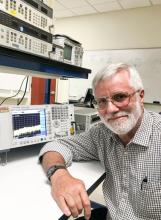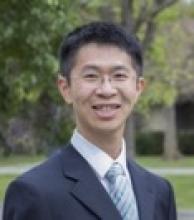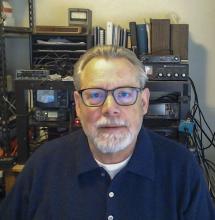Key Technologies for Upgrading Cable Television Networks

Mr. Chris Day
Director
Design Center, Analog Devices, Santa Rosa, CA
Thu, 03/16/2023
Abstract: The movement towards a remote workforce brought on by the COVID pandemic have combined with competition to place strong pressure on Cable Television operators to increase their network performance. Recent industry initiatives are touting up to 10 GBps using the existing coaxial cables with upgraded repeater amplifiers. A new DOCSIS (Data Over Cable Service Interface Specification) standard has been approved with significant trials slated for later this year. The new specification, DOCSIS 4.0, supports two divergent architectures each with strengths and weaknesses.
In this presentation, physical-layer technologies that enable DOCSIS 4.0 systems to reach their goals are discussed. Achieving higher levels of signal output to overcome losses in cables without adding distortion is essential to transmit more complex signal modulation that improve spectral efficiency. Improved amplifier linearity continues to be a key enabler for many communication networks. It can be achieved through a combination of newer device technologies such as GaN (Gallium-Nitride) and careful design with an array of linearization circuit techniques.
Bio: Chris Day has 35 years of experience in RF circuits, systems, and markets. After working at Hewlett Packard Santa Rosa for 9 years as an R&D Engineer on Vector Network Analyzers, he became an entrepreneur in the Cable Television industry. He co-founded three companies over a 25-year period, including TriAccess Technologies (acquired by TriQuint Semiconductor in 2009) and OneTree Microdevices (acquired by Analog Devices in 2017). He currently works for Analog Devices as a Design Center Director in their Santa Rosa office. He has a BSEE from UC Berkeley and an MBA from Golden Gate University. He has 6 patents on broadband amplifier linearization.
How a Scottish academic in 1873 set the stage for today’s global communications

Mr. Rob Rowlands
Volunteer Faculty
Engineering Department, SSU
Thu, 03/02/2023
Abstract: Hard as it is to believe today, the connection between electricity and magnetism was not made until early in the 19th Century. James Clerk Maxwell brought together field theories from Gauss, Ampere and Faraday into a unified set of equations. At the publication of his “Treatise on Electricity and Magnetism” 1873, radio had not yet been demonstrated and the electromagnetic properties of light were not understood. Today these equations are the basis of our modern world allowing us to carry powerful communications tools in our pocket or place a telescope in space a million miles away. The talk is a review of some of the miracles that followed from the math, though understanding the vector math is not required (119 words).
Bio: Rob received a Bachelor of Engineering degree in electrical engineering from the University of Canterbury in Christchurch, New Zealand in 1971. He was a Transmission Engineer in the NZ Post Office for 22 years, followed by 21 years with HP and Agilent in the SF Bay Area in Business Development and sales of communications test equipment. Since 2017 he has been a volunteer lecturer teaching a popular RF Test Laboratory class at Sonoma State University. He is semi-retired but still selling test equipment for Gap Wireless. Rob is a life member of IEEE
Snap-Shot 3D Cameras

Dr. Weijian Yang
Associate Professor
Department of Electrical and Computer Engineering, University of California, Davis
Thu, 02/16/2023
Abstract: Three-dimensional (3D) imaging through a compact device could enable many applications in mobile consumer electronics and biomedical endoscopy. Conventional 3D cameras are bulky and require taking multiple photos to synthesize a 3D scene. Here, I will introduce a new type of 3D camera. It replaces all the bulk optics by a single layer of optical mask and can be made very compact. It takes a snap-shot of the 3D object or scene, and then recovers the 3D information through computational algorithms. Here, I will discuss the two 3D cameras that we recently developed, which can image 3D microscopic objects or 3D macroscopic scenes. Both cameras are composed of a single piece of randomly positioned microlens array and an image sensor. We develop highly-efficient computational algorithms to reconstruct the 3D objects and 3D scenes from a single camera exposure. Our 3D cameras open new avenues for high speed 3D imaging with a compact device footprint.
Bio: Weijian Yang is an associate professor at the Department of Electrical and Computer Engineering at the University of California, Davis. He received his undergraduate degree from Peking University and a PhD from the University of California, Berkeley, all in Electrical Engineering. After postdoctoral training in neuroscience at Columbia University, Dr. Yang started his own laboratory at UC Davis in late 2017. His current research aims to develop advanced optical methods and neurotechnologies to interrogate and modulate brain activity, with a goal to understand how neural circuits organize and function and how behaviors emerge from neuronal activity. He is a recipient of the Career Awards at the Scientific Interface from Burroughs Wellcome Fund in 2016, the Early Career Award from National Science Foundation in 2019, and the Science and PINS Prize for Neuromodulation (second prize) from American Association for the Advancement of Science in 2021.
Introduction to Microgrids

Mr. Bob Salter
Energy Systems Consultant
Thu, 02/02/2023
Abstract: Most consumers receive their electricity via electrical grids consisting of utility generation plants and transmission and distribution networks. In most highly developed and populated parts of the world, consumers receive their electricity continuously and reliably most of the time. Unfortunately, disruptions do occur for various reasons, and with significantly negative social, economic, and public safety impacts. In addition, modern utility rate structures can significantly impact electricity costs to consumers due to surcharges based on tiered and time-of-use pricing and peak demand charges. In lesser populated and/or more remote locations, electrical grids do not exist at all, and localized solutions are required.
 This lecture will discuss Microgrids as a solution to some of the challenges we face; we will explore definition of microgrid; types of microgrids; main elements of microgrids including DERs and DERMS; and review use case and value proposition examples. We will also explore steps required to design a microgrid and some of the simulation and modeling tools used.
This lecture will discuss Microgrids as a solution to some of the challenges we face; we will explore definition of microgrid; types of microgrids; main elements of microgrids including DERs and DERMS; and review use case and value proposition examples. We will also explore steps required to design a microgrid and some of the simulation and modeling tools used.
Bio: Bob Salter has 47 years of industry experience in Energy and Mechanical Systems Engineering, Marketing, Construction, Commissioning, Compliance and Field Services. From 2008 Bob has focused on design and execution of major projects involving electrical power distribution, monitoring, controls and protection. Bob is a Registered Professional Engineer (State of California, Electrical) since 1973; received his BS-EE from Worcester Polytechnic Institute in 1976, and his MBA (with concentration in Finance) from San Francisco State University in Finance in 1982. Bob is a Life Senior Member in IEEE, current Treasurer of OEB Section, and past Officer at various Chapter, Section and Council Levels. Bob is currently a volunteer Professor on the SSU Engineering Department faculty.
Infrared Oscilloscopes: Sampling 30-THz Waveforms for Next-Generation Spectroscopy

Dr. William Putnam
Assistant Professor
ECE Department, UC Davis, Davis, CA
Thu, 11/17/2022
Abstract: In electronic devices like field-effect transistors, applied electric fields, up to hundreds of gigahertz in frequency, control electron motion. Recently, it has been demonstrated that the electric fields of ultra-intense laser pulses, i.e. electric fields in the tera- to petahertz (THz to PHz) regime, can similarly control electric currents around gas-phase atoms. In this talk, I will describe recent efforts to extend these early demonstrations of THz- and PHz-speed electronics from gaseous media to solid-state, microelectronic devices. Specifically, I will describe nanoantenna-based devices in which electric currents can be switched on and off by individual oscillations of the electric field of an infrared laser pulse. I will show that these devices can be used to sample >30-THz electric field waveforms in the time domain, and I will overview one of the exciting potential applications of these devices: field-resolved infrared spectroscopy.
Bio: William Putnam received his Ph.D. in EECS from MIT as well as undergraduate degrees in EECS and physics. Following his Ph.D. he held postdoctoral positions at MIT and the Center for Free-Electron Laser Science (CFEL) at the University of Hamburg, Germany. After his postdoctoral work and prior to joining the faculty at UC Davis, William spent several years as a staff scientist at Northrop Grumman’s basic research laboratory, NG Next where he worked on ultrafast electronics and frequency comb technology. From his undergraduate years to his postdoctoral work to his time in industry, William’s research has centered around both fundamental and applied studies of optics and quantum electronics.